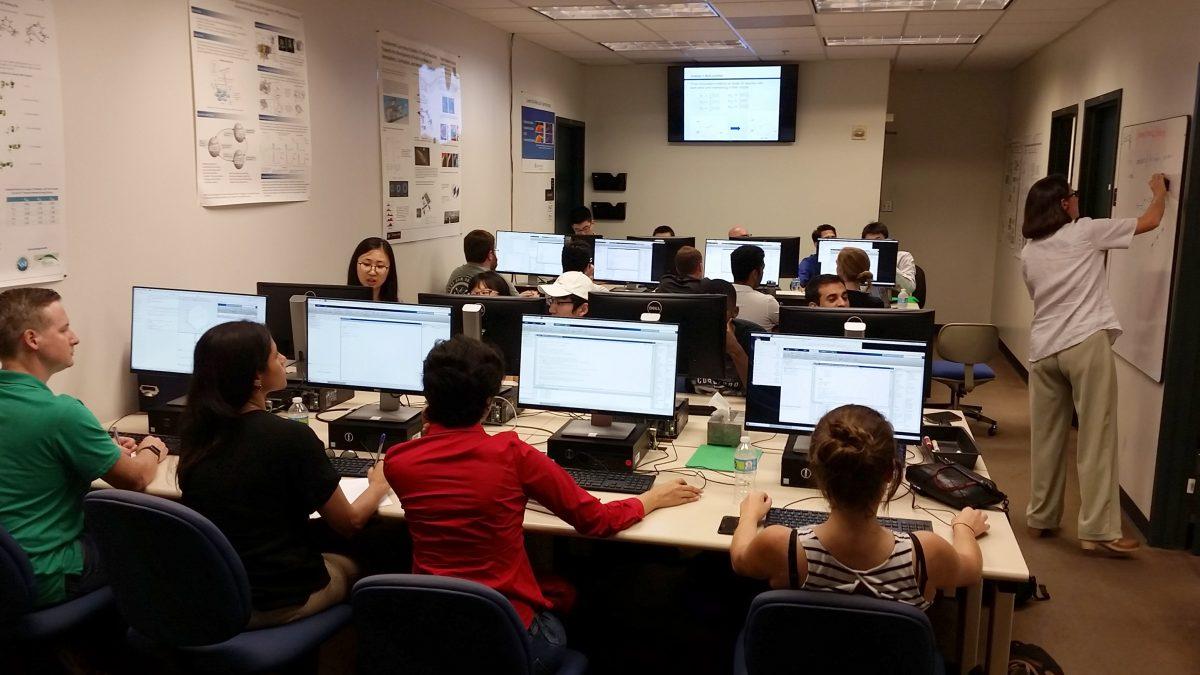For the sixth straight year, Texas A&M hosted the annual Computational Materials Science school over the summer. With roughly 20 students in attendance, the workshop has grown since its inception in 2012, and has recently been approved for next summer as well.
Originally set up by Raymundo Arroyave, materials science and engineering professor, and Dimitris Lagoudas, aerospace engineering professor, the school has garnered the attention of graduate students, professors and industry leaders from around the world.
According to Lagoudas, the school’s inception was inevitable.
“It was a natural evolution, we had put together an effort, we called it the International Institute for Multifunctional Materials, IIMEC,” Lagoudas said. “We had thought about how do we organize our educational activities with all of our partners.”
The partners included the University of Houston, the University of Pennsylvania and universities in Europe, North Africa and the Middle East, and according to Lagoudas, IIMEC organized several different workshops from 2010 to 2012, including the first Computational Materials Science winter school, held in January 2012 at A&M. Later, according to Lagoudas, it was moved to the summer.
Arroyave, who co-organized this year’s school, said that the school still attracts significant international attention.
“Usually, we have about one third of the participants are from universities in Europe, Asia, Latin America, then we have another third of the students come from leading universities in US and then the other third comes from A&M,” Arroyave said.
Currently, the school runs for approximately a week and a half at the end of July, according to Ankit Srivastava, materials science and engineering professor. The school only accepts around twenty graduate students each year, a limitation set both by A&M’s willingness to waive fees for the attendees and by the technology available at A&M, according to Srivastava.
“The way summer school is, the first half of the day, before lunch, is all instructional,” Srivastava said. “The second half of the day, post-lunch, is all hands on, so we need to have that many computers set up, to have them provide access to all students in the summer school.”
According to Srivastava, the morning lectures feature a variety of lecturers, from A&M professors to, this year, two industry professionals. The topics for each day focus on a particular facet of materials science that is introduced in the morning and elaborated upon in the afternoon lab.
According to Arroyave, there is far more behind-the-scenes work that goes into each day than students realize.
“Preparing one hour of lecture means that you have to put in about four hours of work,” Arroyave said. “These people teach four hours, plus three hours of lab, and labs are more difficult to design, so an instructor is putting thirty hours or more in a day of instruction.”
Despite this, Arroyave said that the summer school will still be held every year.
“There is no question about it, there is going to be a 2018 summer school,” Arroyave said. “This is a one-of-a-kind thing that we have to keep going, we have to keep organizing and putting together.”
Computational materials science summer school renewed for 2018
October 4, 2017
0
Donate to The Battalion
$1815
$5000
Contributed
Our Goal
Your donation will support the student journalists of Texas A&M University - College Station. Your contribution will allow us to purchase equipment and cover our annual website hosting costs, in addition to paying freelance staffers for their work, travel costs for coverage and more!
More to Discover










